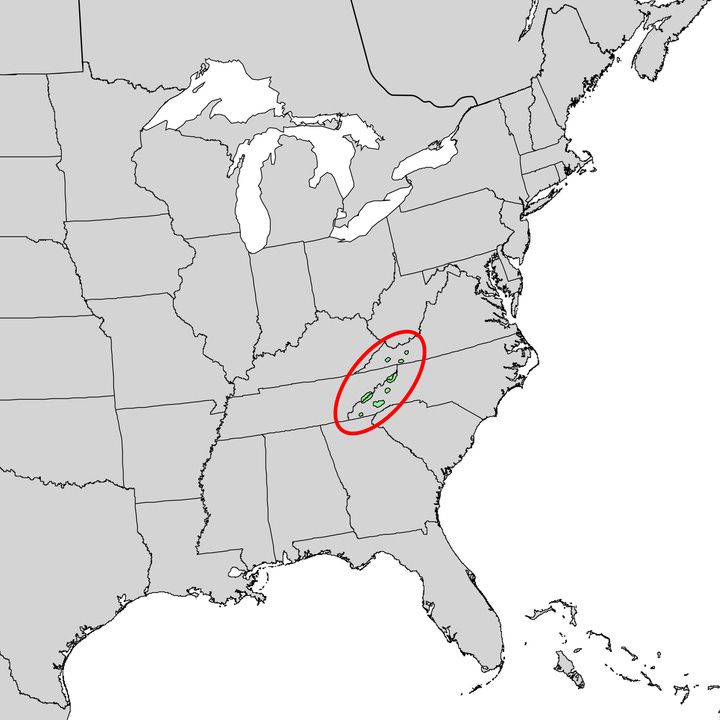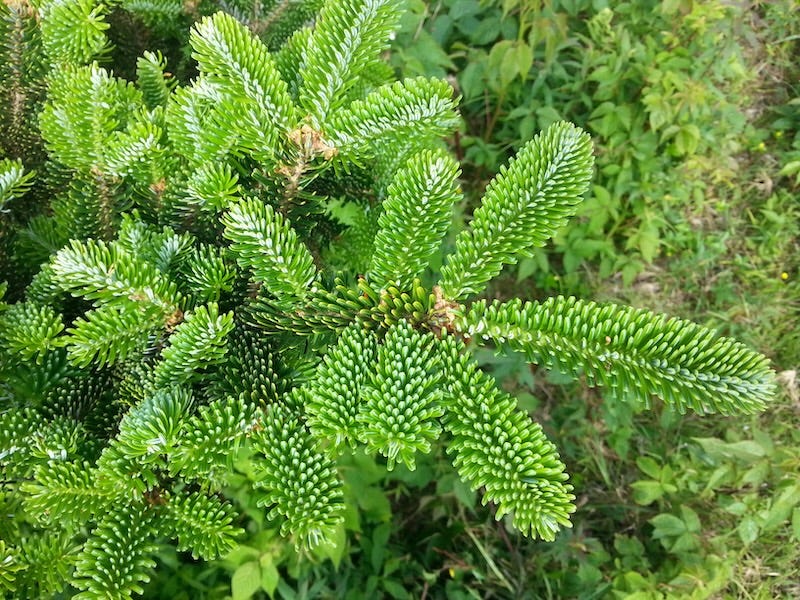Happy holidays, y’all! For this, my last post of 2024, I figured I’d go timely and look at a species that’s been called the “Cadillac of Christmas trees.” That’s thanks to its soft needles—which, winningly, stay intact longer than some of its rival species—and its perfectly Christmas-y scent. Want more proof? Sixteen times, the official White House Christmas tree has been a Fraser fir, more than any other species.
And while the South might be known for its white Christmases, we are the homeland of the Fraser fir. Farmed, the species supports a $300 million industry in North Carolina, including 7,000 jobs. It’s always been a tough business, in part because in the wild a Fraser fir likes to cling to high and cloud-wrapped peaks—hardly a suitable place for a tree farm. Lately, though, the hotter weather and bigger storms delivered by climate change have made things even harder. So too has a kind of root rot known as Phytophthora. “It’s four times as hard now” to get a Fraser fir to reach maturity than a few decades back, one longtime farmer told The Assembly this year.
I feel for the farmers, but I can’t help but think the best way to see a Fraser fir might not be screwed into your old hand-me-down tree stand, but out in the wild. These trees grow in just a few pockets of southeastern Appalachia—and they’re survivors. Once, 22,000 years ago, there were many more fir trees in the South, thanks to global glacial weather. But as the world warmed, only the mountaintop firs survived. They live in what are known as “sky islands,” separated from their relatives long enough that they’ve diverged to become a separate species.


The forests where these firs grow—also marked by red spruce—are considered one of the most endangered ecosystems in the United States. In the 1950s, the trees were hit hard by a fluffy white little insect known as the adelgid; as many as two-thirds died. There were fears that the Fraser fir might go the way of the American chestnut. Happily, though, the adelgid began to wane by the ‘90s, and on some sites—including Kuwohi, in Great Smoky Mountains National Park—the number of firs has as much as tripled. That may be a respite, though, as scientists worry that climate change will come for the wild firs, too. Let that be a reminder: Go out and see this Christmas miracle while you still can. Seek every wild miracle you can.

The briefing
Southern developments
🧸 The hunt is on
Louisiana’s controversial bear hunt—the first in decades—kicked off in December. Most of the ten tags went to landowners who assisted state biologists in recovering the bear (Illuminator).
🏂 Southern secrets
Outside Magazine columnist Graham Averill offers a paean to an ideal outdoors town—with skiing season and a mountain biking season—tucked away in an overlooked corner of the South.
🐊 Swamp protector
Georgia Sen. Jon Ossoff backs a federal proposal to expand Okefenokee National Wildlife Refuge, a means to protect it from damage from a proposed titanium mine. But some people think the proposal needs to grow bigger still (Journal-Constitution).
🚤 Outdoor rec brings Florida $58 billion
The outdoors industry brings in 3.6% of Florida’s GDP—more than in any other state (Axios). The rest of the South mostly lags behind the pack, though.
🐾 Panthers in peril
A car-struck Florida panther reveals both the success and the peril of this species: this is the deadliest year for panthers since 2016, but the panthers seem to be pressing further north (Sun-Sentinal).





The tree farm from NC we have bought our tree from the last several years lost 3 upcoming years worth of baby tres during the hurricane. Very sad situation. Great family businesses to support! Loved seeing this article and learning about the native range